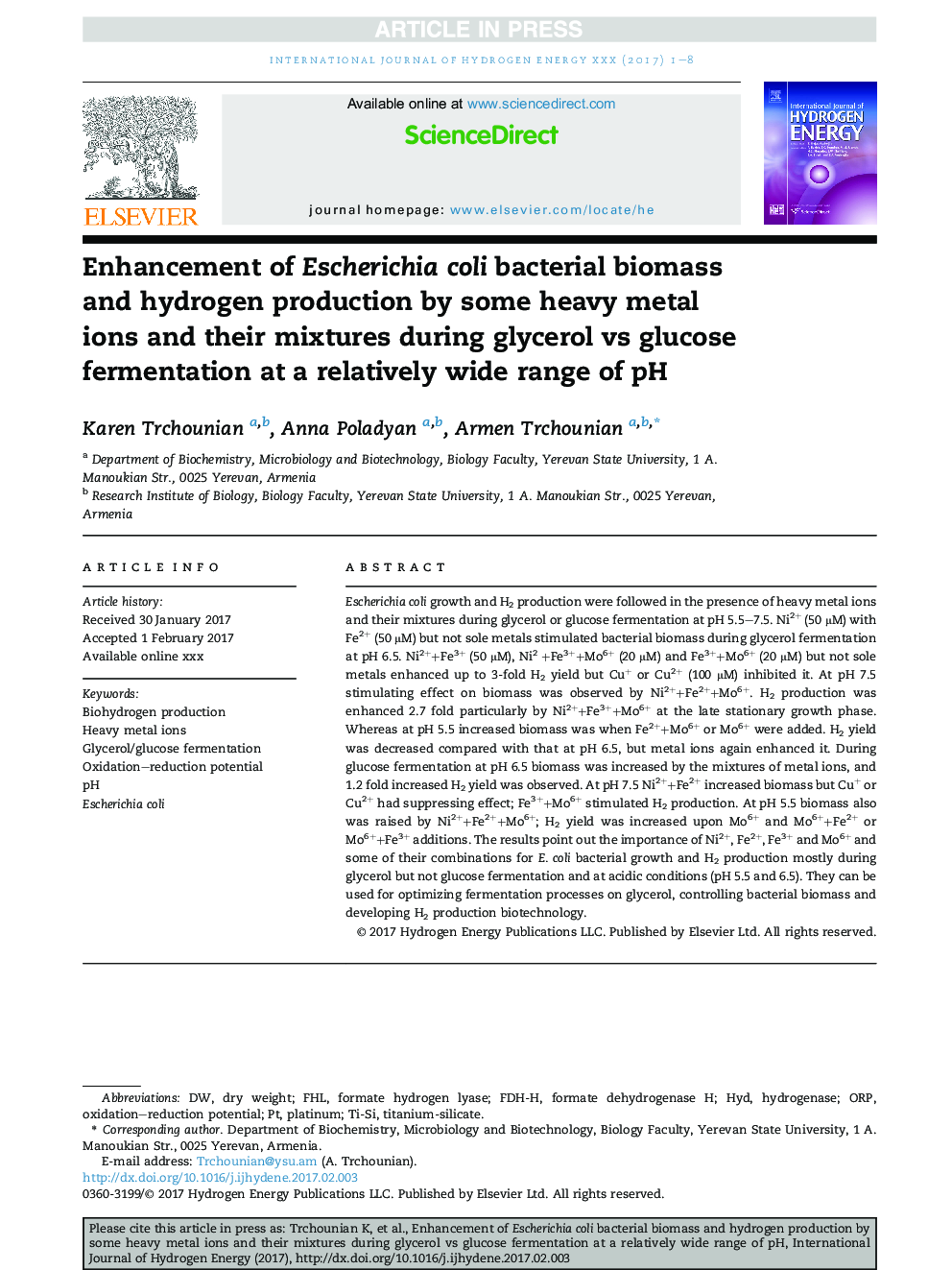| Article ID | Journal | Published Year | Pages | File Type |
|---|---|---|---|---|
| 5146099 | International Journal of Hydrogen Energy | 2017 | 8 Pages |
Abstract
Escherichia coli growth and H2 production were followed in the presence of heavy metal ions and their mixtures during glycerol or glucose fermentation at pH 5.5-7.5. Ni2+ (50 μM) with Fe2+ (50 μM) but not sole metals stimulated bacterial biomass during glycerol fermentation at pH 6.5. Ni2++Fe3+ (50 μM), Ni2 +Fe3++Mo6+ (20 μM) and Fe3++Mo6+ (20 μM) but not sole metals enhanced up to 3-fold H2 yield but Cu+ or Cu2+ (100 μM) inhibited it. At pH 7.5 stimulating effect on biomass was observed by Ni2++Fe2++Mo6+. H2 production was enhanced 2.7 fold particularly by Ni2++Fe3++Mo6+ at the late stationary growth phase. Whereas at pH 5.5 increased biomass was when Fe2++Mo6+ or Mo6+ were added. H2 yield was decreased compared with that at pH 6.5, but metal ions again enhanced it. During glucose fermentation at pH 6.5 biomass was increased by the mixtures of metal ions, and 1.2 fold increased H2 yield was observed. At pH 7.5 Ni2++Fe2+ increased biomass but Cu+ or Cu2+ had suppressing effect; Fe3++Mo6+ stimulated H2 production. At pH 5.5 biomass also was raised by Ni2++Fe2++Mo6+; H2 yield was increased upon Mo6+ and Mo6++Fe2+ or Mo6++Fe3+ additions. The results point out the importance of Ni2+, Fe2+, Fe3+ and Mo6+ and some of their combinations for E. coli bacterial growth and H2 production mostly during glycerol but not glucose fermentation and at acidic conditions (pH 5.5 and 6.5). They can be used for optimizing fermentation processes on glycerol, controlling bacterial biomass and developing H2 production biotechnology.
Related Topics
Physical Sciences and Engineering
Chemistry
Electrochemistry
Authors
Karen Trchounian, Anna Poladyan, Armen Trchounian,
